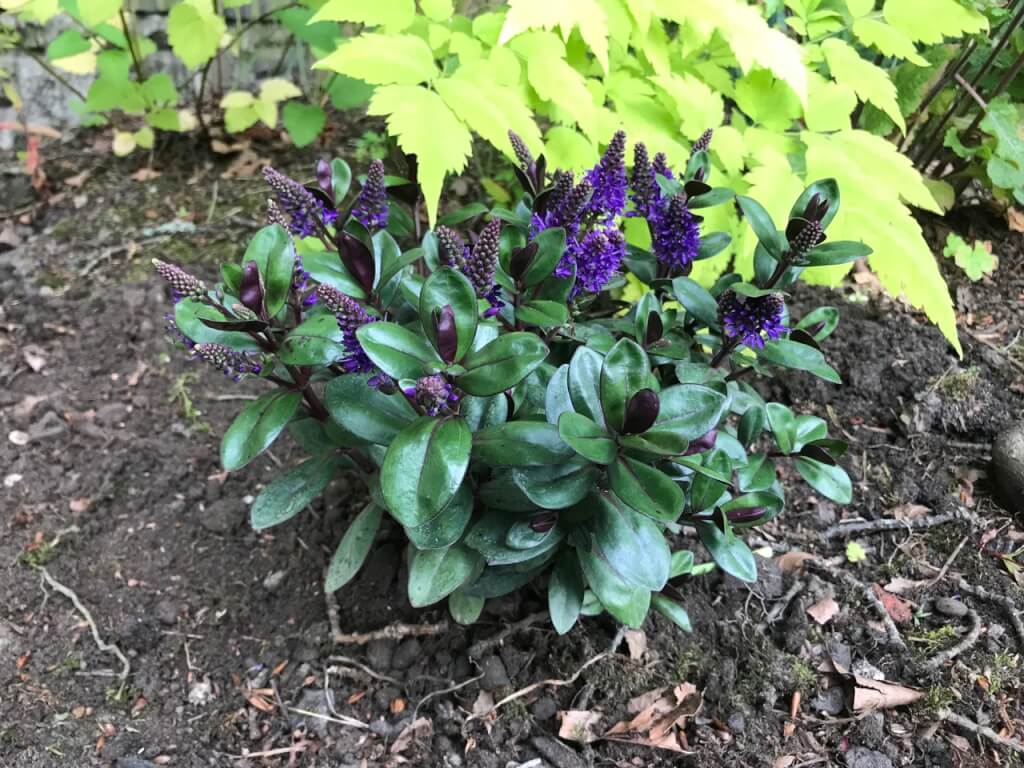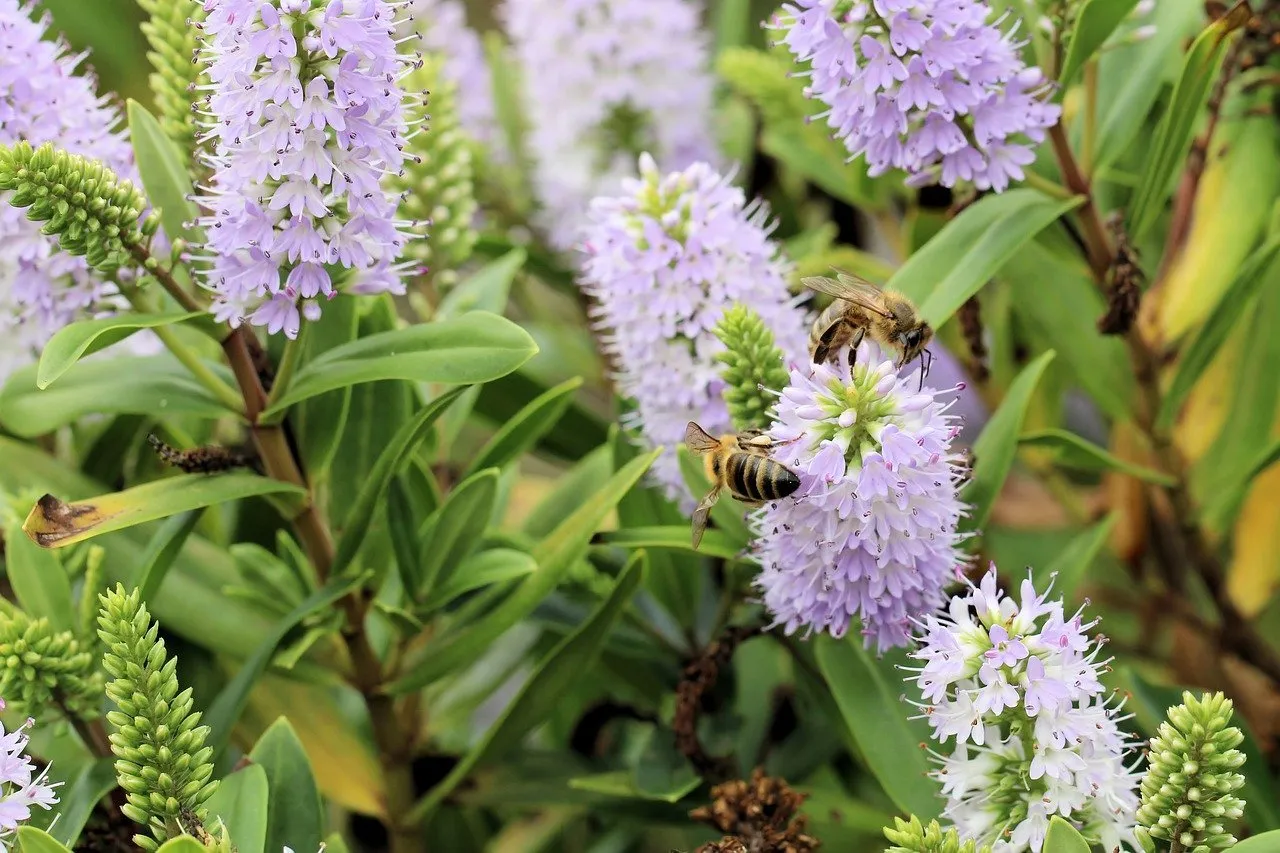Ask a Gardening Question Forum
 Lee Burkhill: Award Winning Designer & BBC 1's Garden Rescue Presenters Official Blog
Lee Burkhill: Award Winning Designer & BBC 1's Garden Rescue Presenters Official Blog

Welcome to the ultimate beginner gardening and garden design forum! Where no gardening question is too silly or obvious. This online gardening forum is run by Lee Burkhill, the Garden Ninja from BBC 1's Garden Rescue and a trusted group of experienced gardeners.
Whether you are a beginner or an expert gardener, it's a safe place to ask garden-related questions for garden design or planting. If you have a problem in your garden or need help, this is the Garden Forum for you!

Posting Rules: This space is open for all garden-related questions. Please be polite, courteous and respectful. If you wouldn't say it to your mum's face, then don't post it here. Please don't promote, sell, link spam or advertise here. Please don't ask for 'cheeky' full Garden redesigns here. They will be deleted.
If you need a garden design service, please use this page to book a design consultation. I will block anyone who breaks these rules or is discourteous to the Garden Ninja Community.
Join the forum below with your gardening questions!
Quote from Alex on 20th December 2022, 10:36 pmNew gardener here .. the recent snow has turned my variegated Hebe's brown...are they literally "toast" or is there hope ..?
Thanks
New gardener here .. the recent snow has turned my variegated Hebe's brown...are they literally "toast" or is there hope ..?
Thanks
Quote from Lee Garden Ninja on 21st December 2022, 12:46 pmHi @alex
Great question about the hardiness of the wonderful and often underrated Hebe genus of plants.
Hebes are native to New Zelands and recently underwent a name change to Veronica sect. Hebe. As part of the continued understanding of plant families via genetics. This can confuse some new gardeners but don't worry; most people will easily recognise the name Hebe over Veronica for the time being!
The quick answer is that nearly all Hebes are tolerant of snow and frost and will survive. There's no need to panic. I've even seen badly frost bitten Hebes come back from the dead!
Let me provide a bit of background before answering in more detail on snow damage and Hebes, as it will help other people thinking of planting Hebes.
What is a Hebe?
Hebe's are a mix of evergreen shrubs and trees that have waxy leaves and some of the more wonderful flowers. Easy to look after and suitable for the British climate, these plants are great for small gardens, containers and new gardeners.
They are pretty much disease-resistant and quite slow growing, making them excellent fuss-free garden shrubs.
Do Hebe's need full sun?
No, Hebes are a fantastic shade or part shade shrub that are tolerant of low light levels. In complete shade, though, they will lean towards the light, so bear this in mind. Check out my guide for the best plants for shade if you're looking to brighten up a dark flower bed.
The flowers offer valuable pollen for wildlife and can brighten up even the darkest border. Some Hebe's have variegated leaves (leaves that have multiple colours of patterns within them), making them attractive to gardeners who want a lot of variation in their garden spaces and flower beds.
Can Hebes survive frost?
Yes, they can survive most frosts. Given their waxy leaves and woody stems, they have some of the best protection against the elements. This is why Hebes make excellent low-maintenance plants for new and beginner gardeners.
Where they grow natively, New Zealand, they have to deal with warm summers and cold winters. Hebe's may crisp up, go brown or lose their leaves as a protection measure. Making gardeners reel in shock that the Hebes have died.
In my experience, Alex, your brown crispy Hebe is not toast just yet. They usually recover, especially after an Arctic blast like we recently had here in the UK that decimated many gardens with plummeting temperatures! However, they are slow to regrow.
Can I prune a Hebe?
Pruning Hebes should be taken with care, only using very selective pruning. Hard pruning a Hebe can leave a slow regrowth process for it to recover and will certainly stop it from flowering for a few years. Whilst Hebes are bulletproof when it snows, they are super slow growers, so prune with caution.
Only prune out damaged or crossing growth on your Hebe with sharp clean secateurs. (This is an affiliate link, so if you do choose to buy, receive a small commission that helps keep this blog free to use!)
https://youtu.be/B47iplhJHkE
I'd give it another chance and if by next May you're not seeing fresh green growth emerging, then consider lifting and replacing. Alternatively, lift it in spring and put it in a pot of fresh compost until it recovers so you can replace it with something with more vigour in the meantime.
What are the best Hebes to grow?
While opinions on the best Hebe species may vary depending on personal preferences and growing conditions, here are ten noteworthy Hebes commonly appreciated in UK gardens:
Hebe 'Mrs. Winder'
This vigorous Hebe variety showcases dark green leaves and produces abundant spikes of lilac-pink flowers throughout the summer months, attracting bees and butterflies. Probably the most popular snow snow proof of the Hebes!
Hebe 'Red Edge'
This compact evergreen shrub features striking green leaves with red margins and produces small, white flowers in summer, attracting pollinators to the garden.
Hebe 'Autumn Glory'
With its vibrant purple foliage and clusters of mauve flowers in late summer and autumn, Hebe 'Autumn Glory' adds a splash of colour to borders and containers.
Hebe 'Sapphire'
Known for its stunning blue-green foliage and spikes of bright blue flowers in summer, Hebe 'Sapphire' is a charming addition to coastal gardens and rockeries.
Hebe 'Wiri Charm'
This compact Hebe cultivar boasts glossy, dark green leaves and eye-catching spikes of deep pink flowers from spring to early summer, adding a touch of elegance to borders and patio containers.
Hebe 'Amy'
With its variegated leaves featuring creamy margins and green centers, complemented by delicate white flowers in summer, Hebe 'Amy' offers year-round interest in the garden.
Hebe 'Midsummer Beauty'
This Hebe variety is prized for its abundant clusters of fragrant, lilac-pink flowers that bloom from mid to late summer, providing valuable nectar for bees and butterflies.
Hebe 'Silver Dollar'
Characterized by its silvery-blue foliage and compact growth habit, Hebe 'Silver Dollar' makes an excellent choice for low-maintenance borders and rock gardens.
Hebe 'Pewter Dome'
This dwarf Hebe selection features attractive gray-green leaves and produces spikes of pale mauve flowers in summer, making it ideal for smaller gardens and containers.
Hebe 'Purple Shamrock'
With its deep purple foliage and spikes of lavender-purple flowers in summer, Hebe 'Purple Shamrock' adds a touch of drama and colour contrast to garden beds and borders.
Let us know how you get on!
Lee
Hi @alex
Great question about the hardiness of the wonderful and often underrated Hebe genus of plants.
Hebes are native to New Zelands and recently underwent a name change to Veronica sect. Hebe. As part of the continued understanding of plant families via genetics. This can confuse some new gardeners but don't worry; most people will easily recognise the name Hebe over Veronica for the time being!
The quick answer is that nearly all Hebes are tolerant of snow and frost and will survive. There's no need to panic. I've even seen badly frost bitten Hebes come back from the dead!
Let me provide a bit of background before answering in more detail on snow damage and Hebes, as it will help other people thinking of planting Hebes.
What is a Hebe?
Hebe's are a mix of evergreen shrubs and trees that have waxy leaves and some of the more wonderful flowers. Easy to look after and suitable for the British climate, these plants are great for small gardens, containers and new gardeners.
They are pretty much disease-resistant and quite slow growing, making them excellent fuss-free garden shrubs.

Do Hebe's need full sun?
No, Hebes are a fantastic shade or part shade shrub that are tolerant of low light levels. In complete shade, though, they will lean towards the light, so bear this in mind. Check out my guide for the best plants for shade if you're looking to brighten up a dark flower bed.
The flowers offer valuable pollen for wildlife and can brighten up even the darkest border. Some Hebe's have variegated leaves (leaves that have multiple colours of patterns within them), making them attractive to gardeners who want a lot of variation in their garden spaces and flower beds.

Can Hebes survive frost?
Yes, they can survive most frosts. Given their waxy leaves and woody stems, they have some of the best protection against the elements. This is why Hebes make excellent low-maintenance plants for new and beginner gardeners.
Where they grow natively, New Zealand, they have to deal with warm summers and cold winters. Hebe's may crisp up, go brown or lose their leaves as a protection measure. Making gardeners reel in shock that the Hebes have died.
In my experience, Alex, your brown crispy Hebe is not toast just yet. They usually recover, especially after an Arctic blast like we recently had here in the UK that decimated many gardens with plummeting temperatures! However, they are slow to regrow.
Can I prune a Hebe?
Pruning Hebes should be taken with care, only using very selective pruning. Hard pruning a Hebe can leave a slow regrowth process for it to recover and will certainly stop it from flowering for a few years. Whilst Hebes are bulletproof when it snows, they are super slow growers, so prune with caution.
Only prune out damaged or crossing growth on your Hebe with sharp clean secateurs. (This is an affiliate link, so if you do choose to buy, receive a small commission that helps keep this blog free to use!)
I'd give it another chance and if by next May you're not seeing fresh green growth emerging, then consider lifting and replacing. Alternatively, lift it in spring and put it in a pot of fresh compost until it recovers so you can replace it with something with more vigour in the meantime.
What are the best Hebes to grow?
While opinions on the best Hebe species may vary depending on personal preferences and growing conditions, here are ten noteworthy Hebes commonly appreciated in UK gardens:
Hebe 'Mrs. Winder'
This vigorous Hebe variety showcases dark green leaves and produces abundant spikes of lilac-pink flowers throughout the summer months, attracting bees and butterflies. Probably the most popular snow snow proof of the Hebes!
Hebe 'Red Edge'
This compact evergreen shrub features striking green leaves with red margins and produces small, white flowers in summer, attracting pollinators to the garden.
Hebe 'Autumn Glory'
With its vibrant purple foliage and clusters of mauve flowers in late summer and autumn, Hebe 'Autumn Glory' adds a splash of colour to borders and containers.
Hebe 'Sapphire'
Known for its stunning blue-green foliage and spikes of bright blue flowers in summer, Hebe 'Sapphire' is a charming addition to coastal gardens and rockeries.
Hebe 'Wiri Charm'
This compact Hebe cultivar boasts glossy, dark green leaves and eye-catching spikes of deep pink flowers from spring to early summer, adding a touch of elegance to borders and patio containers.
Hebe 'Amy'
With its variegated leaves featuring creamy margins and green centers, complemented by delicate white flowers in summer, Hebe 'Amy' offers year-round interest in the garden.
Hebe 'Midsummer Beauty'
This Hebe variety is prized for its abundant clusters of fragrant, lilac-pink flowers that bloom from mid to late summer, providing valuable nectar for bees and butterflies.
Hebe 'Silver Dollar'
Characterized by its silvery-blue foliage and compact growth habit, Hebe 'Silver Dollar' makes an excellent choice for low-maintenance borders and rock gardens.
Hebe 'Pewter Dome'
This dwarf Hebe selection features attractive gray-green leaves and produces spikes of pale mauve flowers in summer, making it ideal for smaller gardens and containers.
Hebe 'Purple Shamrock'
With its deep purple foliage and spikes of lavender-purple flowers in summer, Hebe 'Purple Shamrock' adds a touch of drama and colour contrast to garden beds and borders.
Let us know how you get on!
Lee


Vuelo Top 10 Garden Blogger Award 2019
Chelsea Flower Show Director Generals Trade Stand Award 2018
5 Star Trade Stand Hampton Court 2018
Garden Media Guild New Talent 2017 Finalist
RHS & BBC Feel Good Gardens Winner 2016
 To my YouTube channel
To my YouTube channel
JOIN THE NINJAS
Join our Ninja community for your Exclusive Discounts
JOIN THE NINJAS

Be the first in line for new Guides, Discount codes and Offers